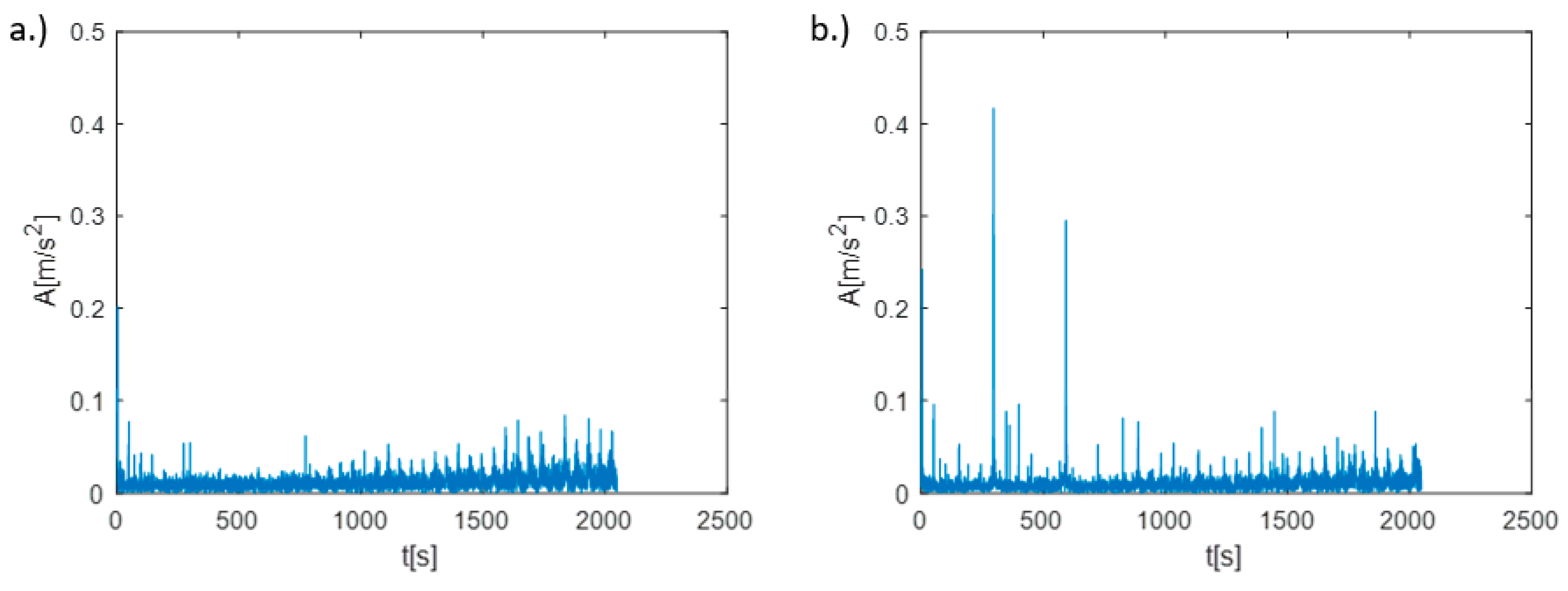Implementation of an Algorithm to Prevent Chatter Vibration in a CNC System
Abstract
1. Introduction
2. Turning Stability
2.1. Stablility Lobes
2.2. Receptance Coupling
3. The Assistance of Machining Parameters Selection
4. Implementation of the Algorithm in the CNC System
4.1. Operator Assistance Systems
4.2. Implementation in FANUC CNC System
- the system must be implemented directly in the CNC control system,
- the system cannot change the existing functionality of the control system
- the system should provide intuitiveness by limiting the amount of data entered by the operator
5. Experimental Validation
6. Conclusions
Author Contributions
Funding
Conflicts of Interest
References
- Marchelek, K.; Pajor, M.; Powałka, B. Vibrostability of the Milling Process Described by the Time-Variable Parameter Model. J. Vib. Control. 2002, 8, 467–479. [Google Scholar] [CrossRef]
- Powałka, B.; Jemielniak, K. Stability analysis in milling of flexible parts based on operational modal analysis. CIRP J. Manuf. Sci. Technol. 2015, 9, 125–135. [Google Scholar] [CrossRef]
- Kaliński, K.J.; Galewski, M.A. Optimal spindle speed determination for vibration reduction during ball-end milling of flexible details. Int. J. Mach. Tools Manuf. 2015, 92, 19–30. [Google Scholar] [CrossRef]
- Tlusty, J.; Polacek, M. The stability of machine tools against self–excited vibrations in machining. In Proceedings of the ASME International Research in Production Engineering, Pittsburgh, PA, USA, 9–12 September 1963; pp. 465–474. [Google Scholar]
- Tobias, S.A.; Fishwich, W. Theory of Regenerative Machine Tool Chatter. Enginee 1958, 205, 199–203. [Google Scholar]
- Parus, A.; Powałka, B.; Marchelek, K.; Domek, S.; Hoffmann, M. Active vibration control in milling flexible workpieces. JVC/J. Vib. Control 2013, 19, 1103–1120. [Google Scholar] [CrossRef]
- Parus, A.; Bodnar, A.; Marchelek, K.; Chodźko, M. Using of active clamping device for workpiece vibration suppression. J. Vib. Eng. Technol. 2015, 3, 161–167. [Google Scholar]
- Cherukuri, H.; Perez-Bernabeu, E.; Selles, M.; Schmitz, T.L. A neural network approach for chatter prediction in turning. Procedia Manuf. 2019, 34, 885–892. [Google Scholar] [CrossRef]
- Cherukuri, H.; Perez-Bernabeu, E.; Selles, M.; Schmitz, T.; Bernabeu, P. Machining Chatter Prediction Using a Data Learning Model. J. Manuf. Mater. Process. 2019, 3, 45. [Google Scholar] [CrossRef]
- Altintas, Y.; Altintas, Y. Manufacturing Automation; Cambridge University Press: Cambridge, UK, 2012; ISBN 9780511843723. [Google Scholar]
- Altintas, Y.; Weck, M. Chatter Stability of Metal Cutting and Grinding. CIRP Ann. 2004, 53, 619–642. [Google Scholar] [CrossRef]
- Altintaş, Y.; Budak, E. Analytical Prediction of Stability Lobes in Milling. CIRP Ann. 1995, 44, 357–362. [Google Scholar] [CrossRef]
- Pajor, M.; Marchelek, K.; Modelling, B.P. Experimental verification of method of machine tool–cutting process system model reduction in face milling. Comput. Methods Exp. Meas. 1999, 21, 503–512. [Google Scholar]
- Jasiewicz, M.; Miądlicki, K.; Powałka, B. Assistance of machining parameters selection for slender tools in CNC control. Proc. AIP Conf. Proc. AIP Publ. LLC 2018, 2029, 020024. [Google Scholar]
- Berczyński, S.; Lachowicz, M.; Pajor, M. An improved method of approximating frequency characteristics in the problem of modal analysis and its applications. Comput. Eng. 2001, 575–584. [Google Scholar]
- Dunaj, P.; Marchelek, K.; Chodźko, M. Application of the finite element method in the milling process stability diagnosis. J. Appl. Mech. 2019, 57, 353–367. [Google Scholar] [CrossRef]
- Dunaj, P.; Berczyński, S.; Dolata, M. Modelling Machine Tool Rocking Vibrations Using Reduced Order Models. In Advances in Materials, Mechanics and Manufacturing; Springer Science and Business Media LLC: New York, NY, USA, 2019; pp. 183–190. [Google Scholar]
- Schmitz, T.L.; Duncan, G.S. Three-Component Receptance Coupling Substructure Analysis for Tool Point Dynamics Prediction. J. Manuf. Sci. Eng. 2005, 127, 781–790. [Google Scholar] [CrossRef]
- Park, S.S.; Altintas, Y.; Movahhedy, M. Receptance coupling for end mills. Int. J. Mach. Tools Manuf. 2003, 43, 889–896. [Google Scholar] [CrossRef]
- Jasiewicz, M.; Powałka, B. Receptance coupling for turning with a follower rest. In Advances in Mechanics: Theoretical, Computational and Interdisciplinary Issues; CRC Press Taylor & Francis: London, UK, 2016; pp. 245–248. [Google Scholar]
- Jasiewicz, M.; Powałka, B. Prediction of turning stability using receptance coupling. AIP Conf. Proc. 2018, 1922, 100005. [Google Scholar]
- Nieslony, P.; Krolczyk, G.; Wojciechowski, S.; Chudy, R.; Zak, K.; Maruda, R. Surface quality and topographic inspection of variable compliance part after precise turning. Appl. Surf. Sci. 2018, 434, 91–101. [Google Scholar] [CrossRef]
- Wojciechowski, S.; Mrozek, K. Mechanical and technological aspects of micro ball end milling with various tool inclinations. Int. J. Mech. Sci. 2017, 134, 424–435. [Google Scholar] [CrossRef]
- Zapłata, J.; Pajor, M. Piecewise compensation of thermal errors of a ball screw driven CNC axis. Precis. Eng. 2019, 60, 160–166. [Google Scholar] [CrossRef]
- Pajor, M.; Grudziński, M. Intelligent Machine Tool—Vision Based 3D Scanning System for Positioning of the Workpiece. Solid State Phenom. 2015, 220, 497–503. [Google Scholar] [CrossRef]
- Mia, M.; Królczyk, G.; Maruda, R.; Wojciechowski, S. Intelligent Optimization of Hard-Turning Parameters Using Evolutionary Algorithms for Smart Manufacturing. Mater. 2019, 12, 879. [Google Scholar] [CrossRef] [PubMed]
- Aslan, D.; Altintas, Y. On-line chatter detection in milling using drive motor current commands extracted from CNC. Int. J. Mach. Tools Manuf. 2018, 132, 64–80. [Google Scholar] [CrossRef]
- Saleem, W.; Zain–ul–abdein, M.; Ijaz, H.; Salmeen Bin Mahfouz, A.; Ahmed, A.; Asad, M.; Mabrouki, T. Computational Analysis and Artificial Neural Network Optimization of Dry Turning Parameters—AA2024–T351. Appl. Sci. 2017, 7, 642. [Google Scholar] [CrossRef]
- Lan, T.-S.; Chuang, K.-C.; Chen, Y.-M.; Lan, T.-S.; Chuang, K.-C.; Chen, Y.-M. Optimization of Machining Parameters Using Fuzzy Taguchi Method for Reducing Tool Wear. Appl. Sci. 2018, 8, 1011. [Google Scholar] [CrossRef]
- Mehrpouya, M.; Sanati, M.; Park, S. Identification of joint dynamics in 3D structures through the inverse receptance coupling method. Int. J. Mech. Sci. 2016, 105, 135–145. [Google Scholar] [CrossRef]
- Duarte, M.L.M.; Ewins, D.J. Rotational degrees of freedom for structural coupling analysis via finite-difference technique with residual compensation. Mech. Syst. Signal Process. 2000, 14, 205–227. [Google Scholar] [CrossRef]
- Jasiewicz, M.; Powalka, B. Identification of a Lathe Spindle Dynamics Using Extended Inverse Receptance Coupling. J. Dyn. Syst. Meas. Control. 2018, 140, 121015. [Google Scholar] [CrossRef]
- Erturk, A.; Ozguven, H.N.; Budak, E. Analytical modeling of spindle–tool dynamics on machine tools using Timoshenko beam model and receptance coupling for the prediction of tool point FRF. Int. J. Mach. Tools Manuf. 2006, 46, 1901–1912. [Google Scholar] [CrossRef]
- Paul, S.; Morales–Menendez, R. Active Control of Chatter in Milling Process Using Intelligent PD/PID Control. IEEE Access 2018, 6, 72698–72713. [Google Scholar] [CrossRef]
- Wan, S.; Li, X.; Su, W.; Yuan, J.; Hong, J.; Jin, X. Active damping of milling chatter vibration via a novel spindle system with an integrated electromagnetic actuator. Precis. Eng. 2019, 57, 203–210. [Google Scholar] [CrossRef]
- Fallah, M.; Moetakef-Imani, B. Adaptive inverse control of chatter vibrations in internal turning operations. Mech. Syst. Signal Process. 2019, 129, 91–111. [Google Scholar] [CrossRef]
- Tang, B.; Akbari, H.; Pouya, M.; Pashaki, P.V. Application of piezoelectric patches for chatter suppression in machining processes. Measurement 2019, 138, 225–231. [Google Scholar] [CrossRef]
- Liu, X.; Su, C.-Y.; Yang, F. FNN Approximation–Based Active Dynamic Surface Control for Suppressing Chatter in Micro–Milling with Piezo–Actuators. IEEE Trans. Syst. ManCybern. Syst. 2017, 47, 2100–2113. [Google Scholar] [CrossRef]
- Miguélez, M.; Rubio, L.; Loya, J.; Fernandez-Saez, J.; Rubio, M.L. Improvement of chatter stability in boring operations with passive vibration absorbers. Int. J. Mech. Sci. 2010, 52, 1376–1384. [Google Scholar] [CrossRef]
- Yang, Y.; Wang, Y.; Liu, Q. Design of a milling cutter with large length–diameter ratio based on embedded passive damper. J. Vib. Control 2019, 25, 506–516. [Google Scholar] [CrossRef]
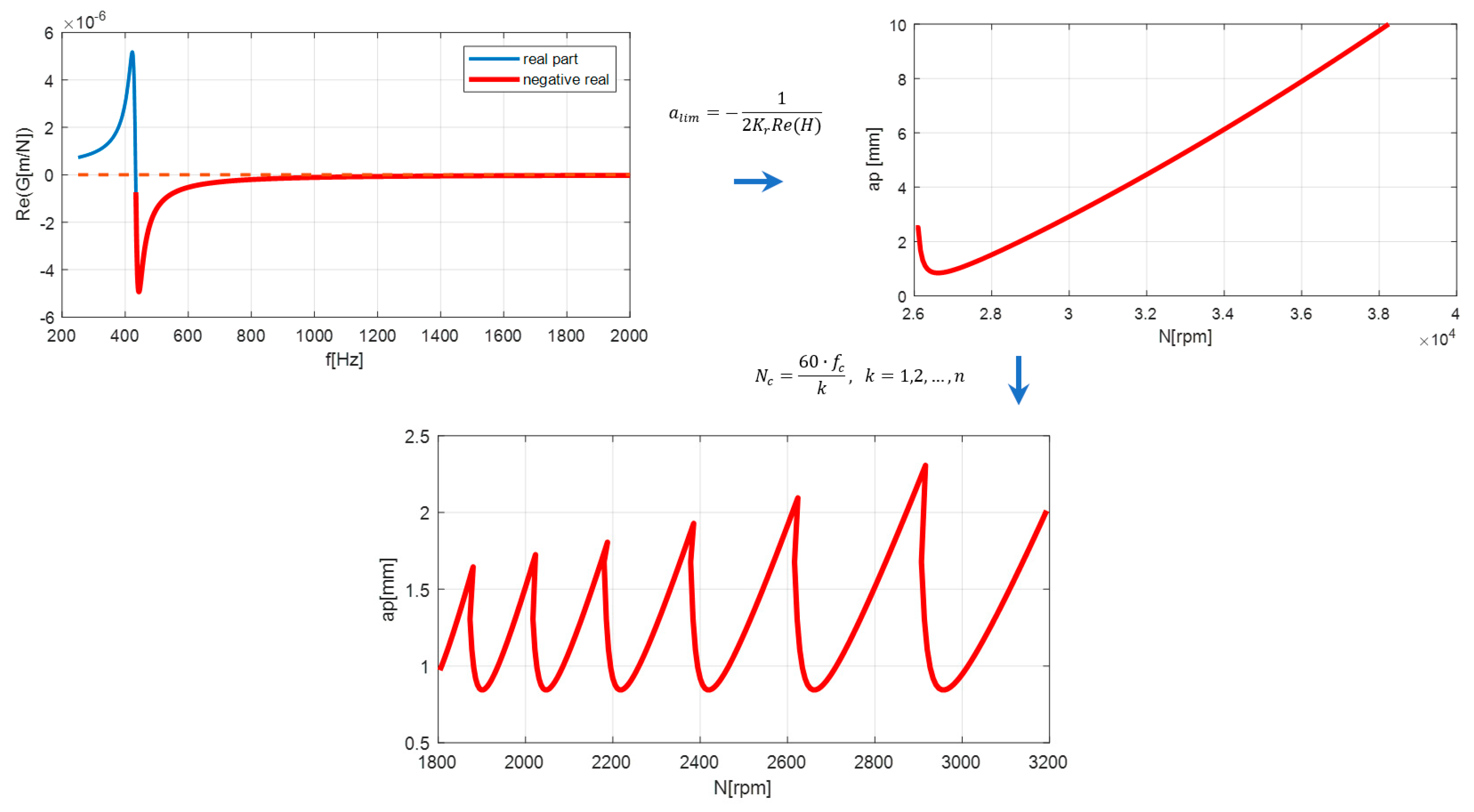
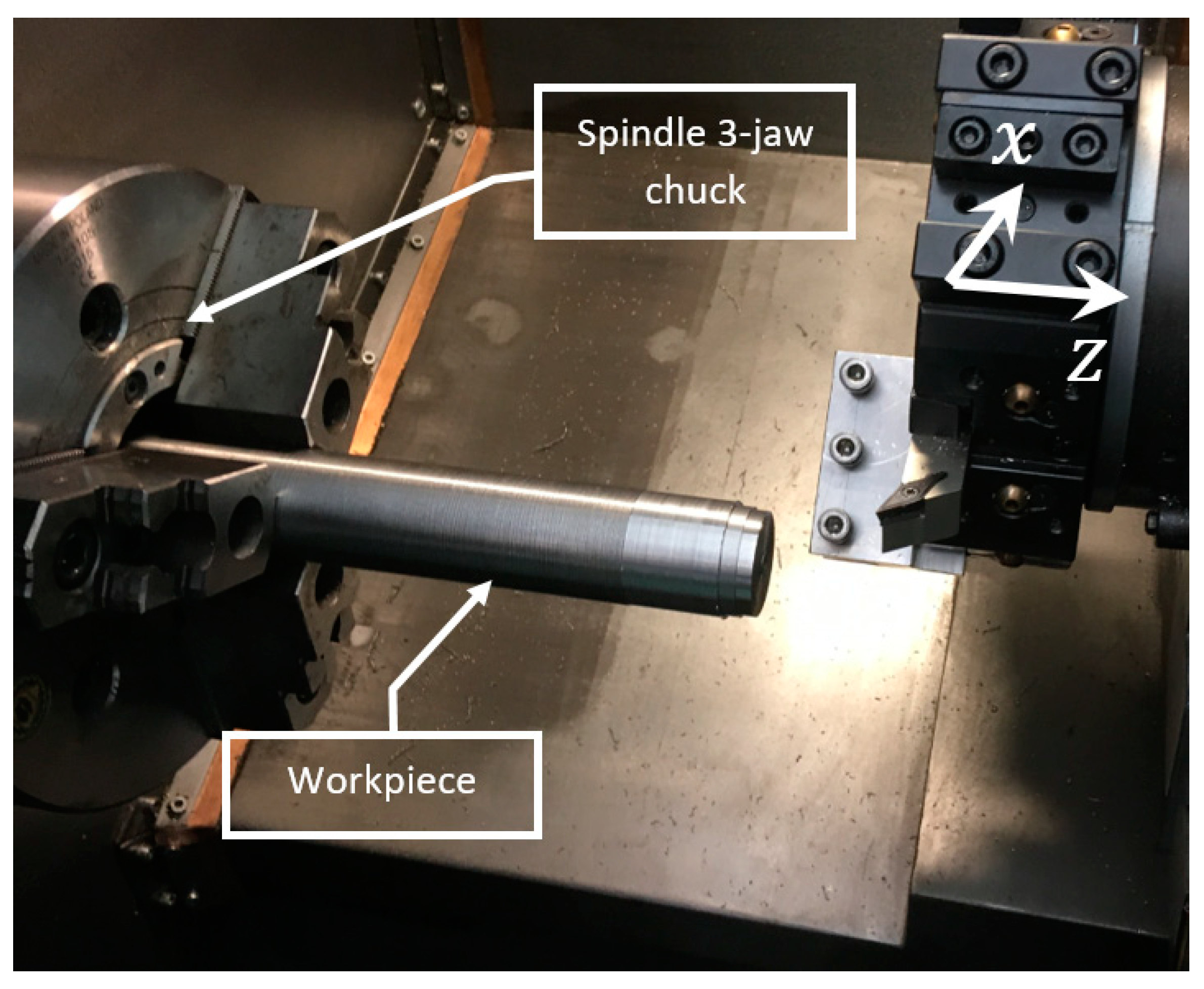
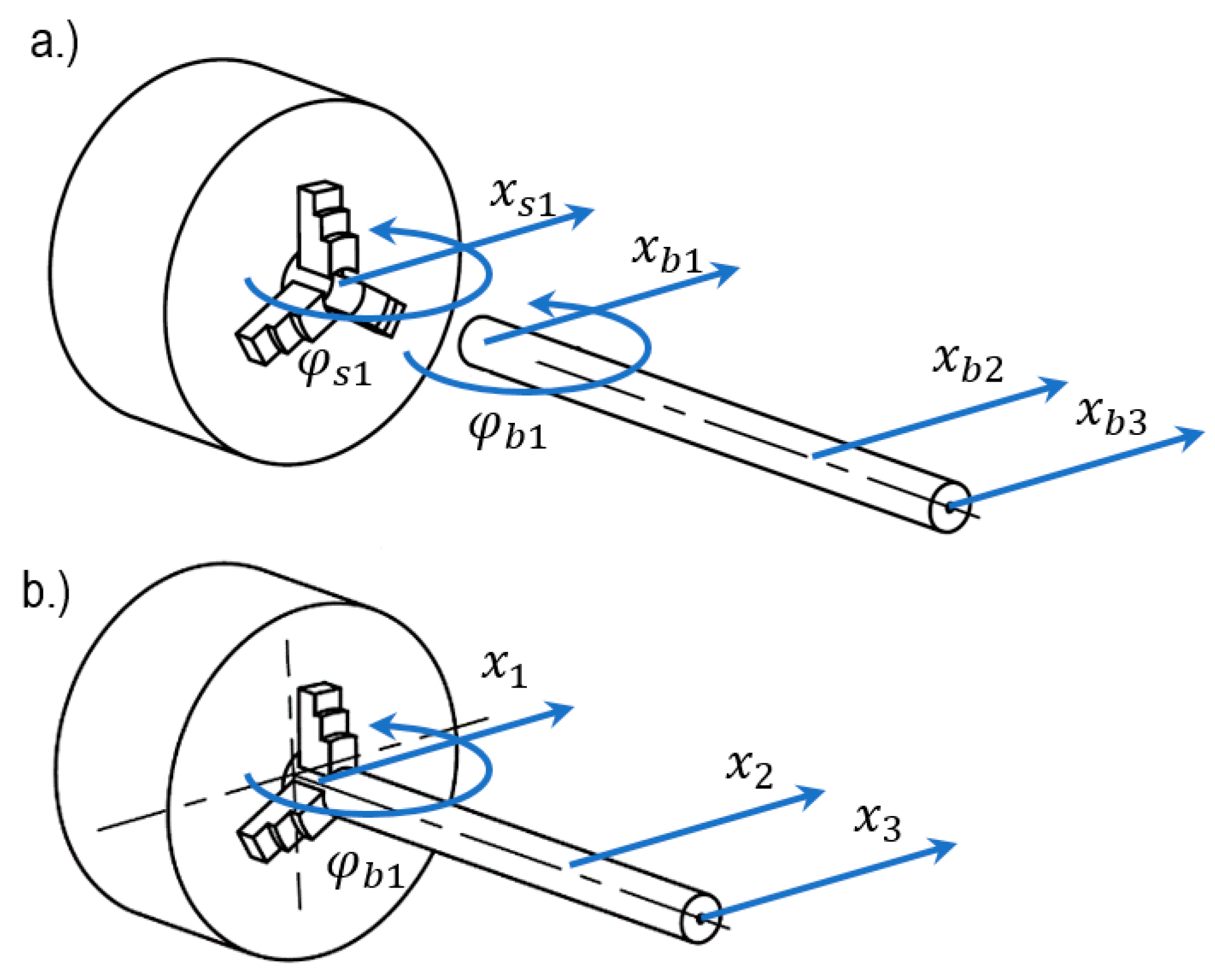
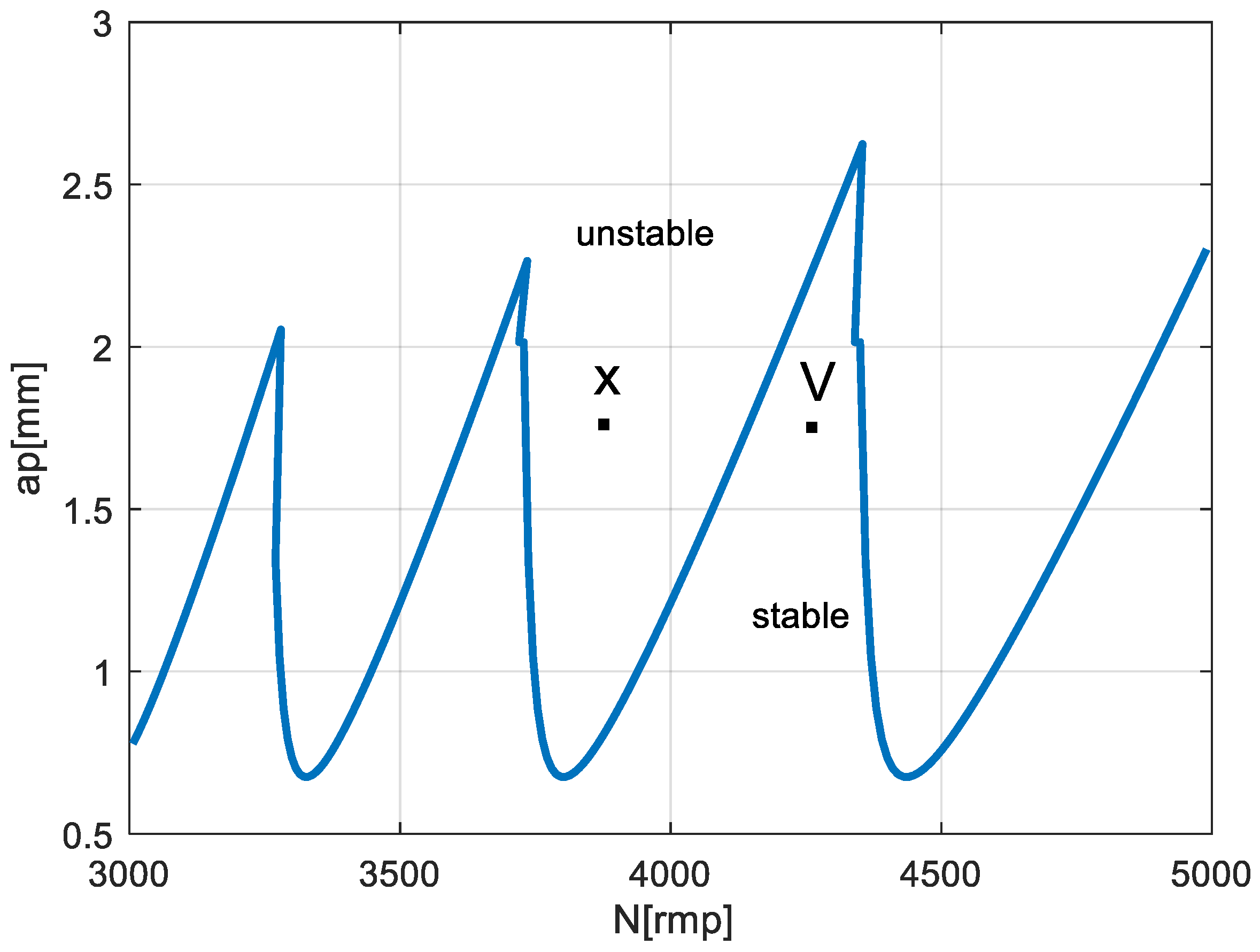
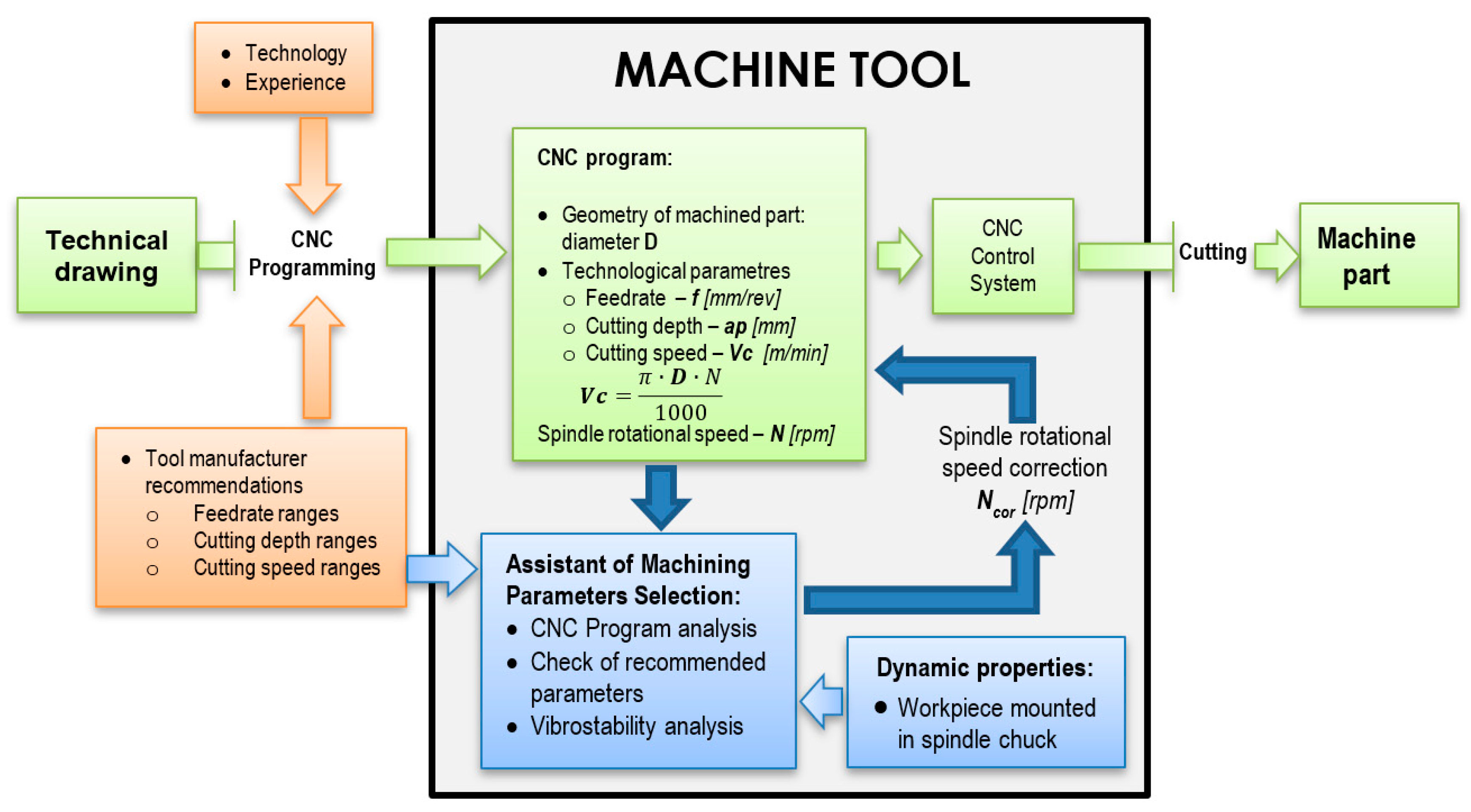
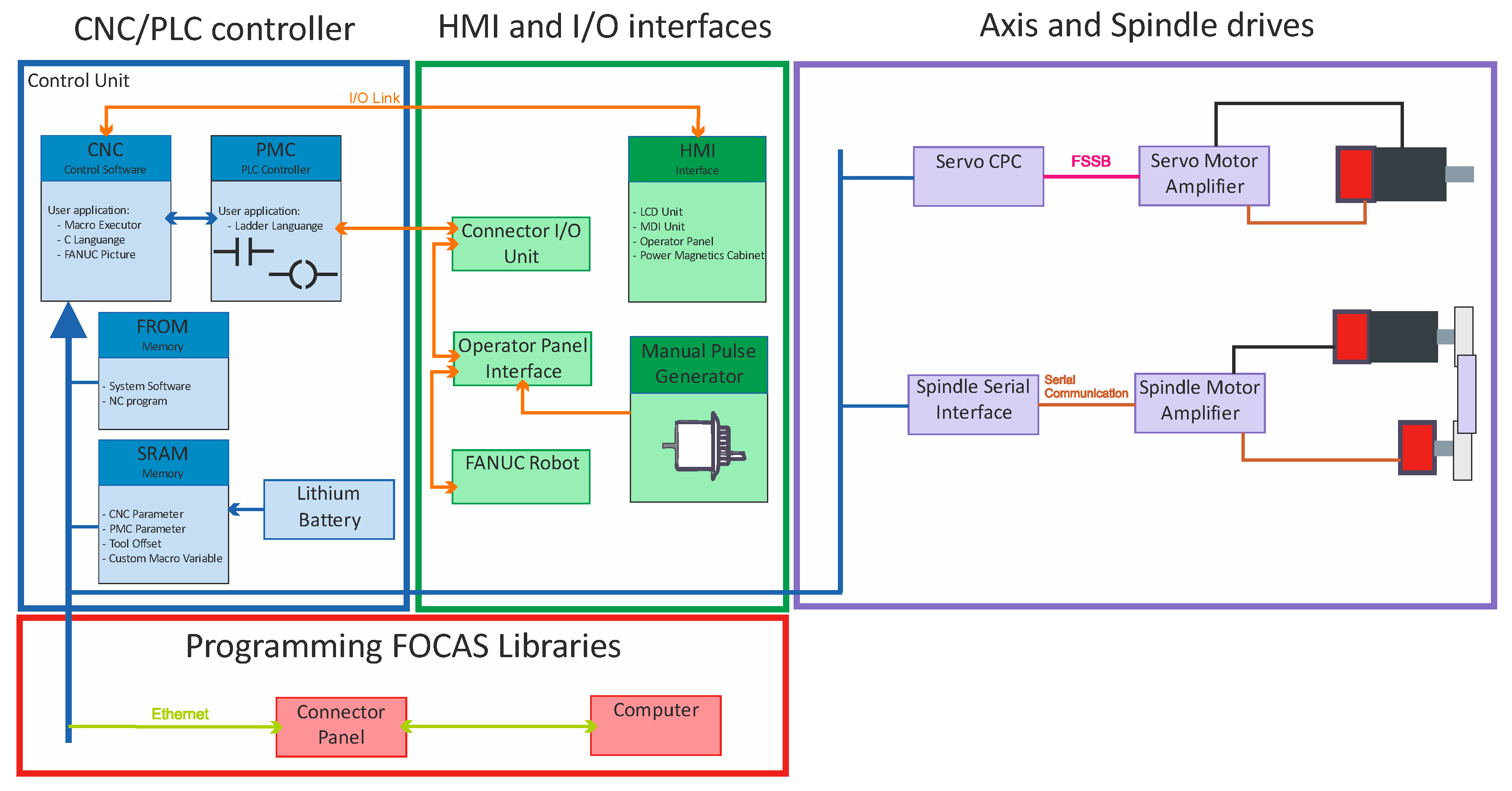

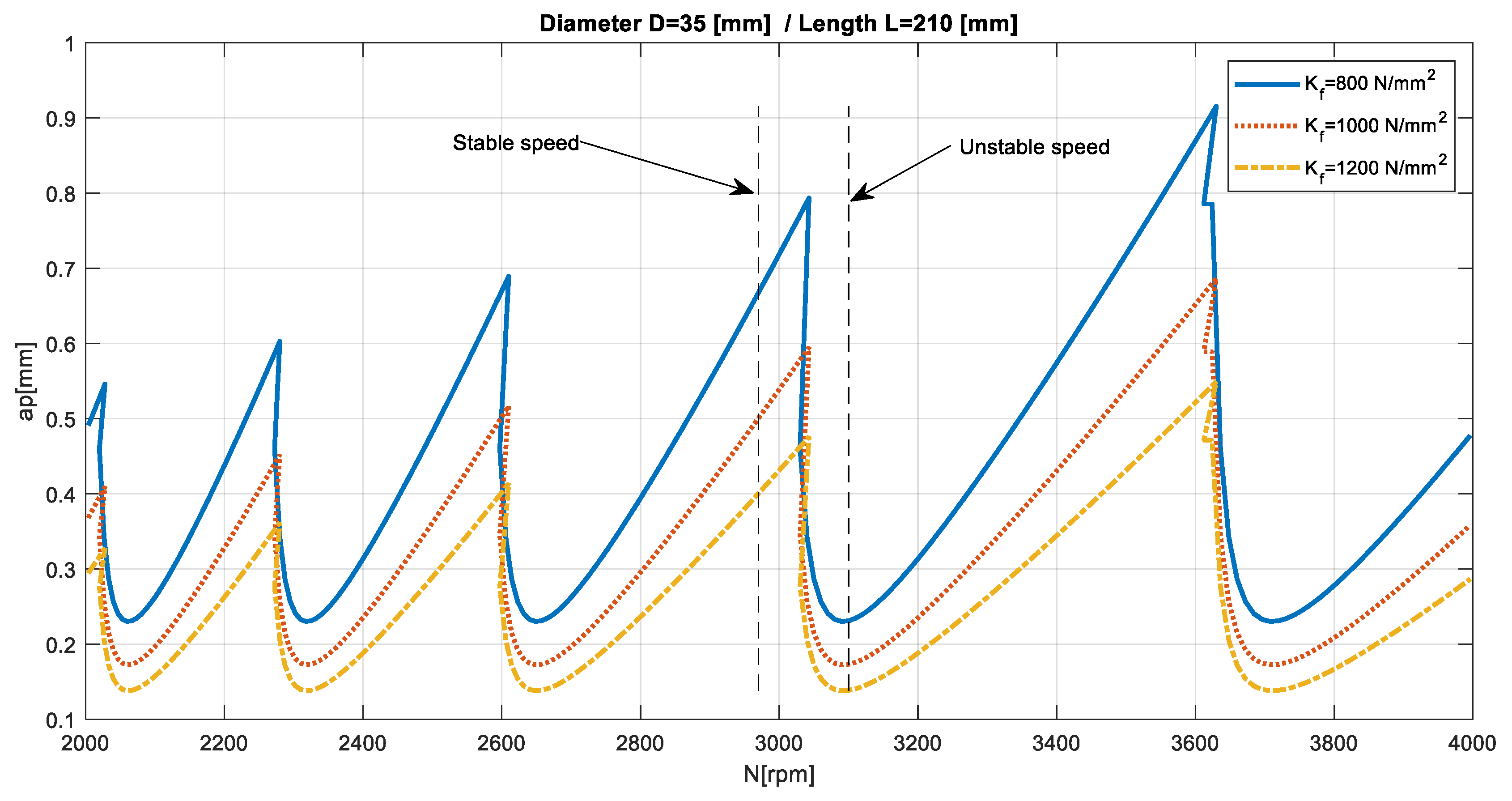
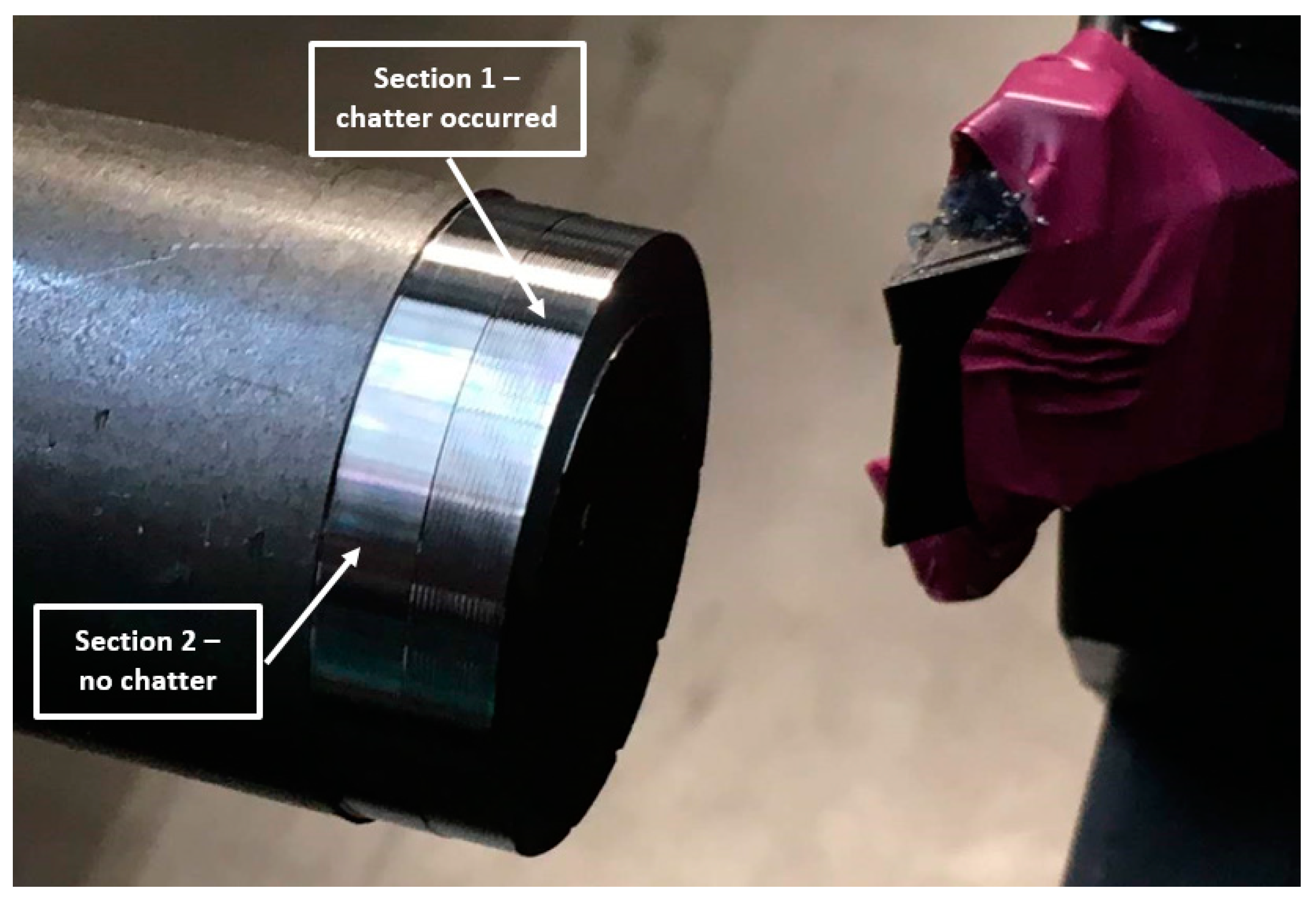
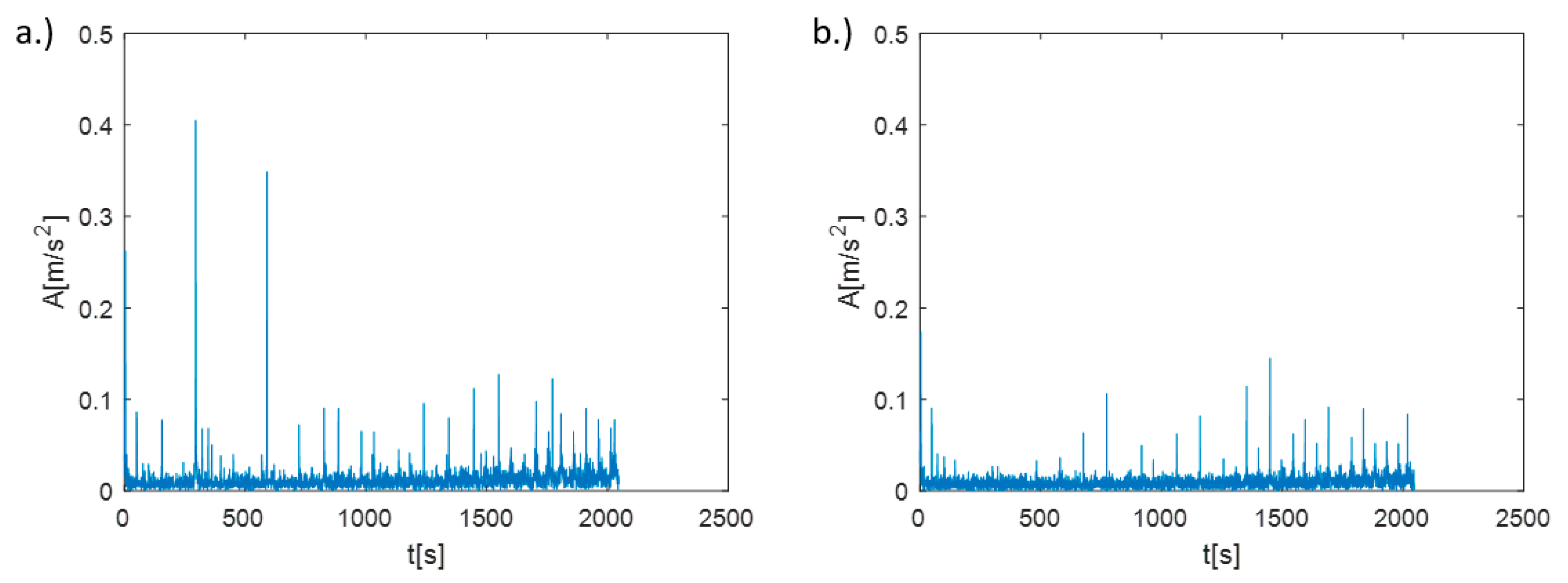
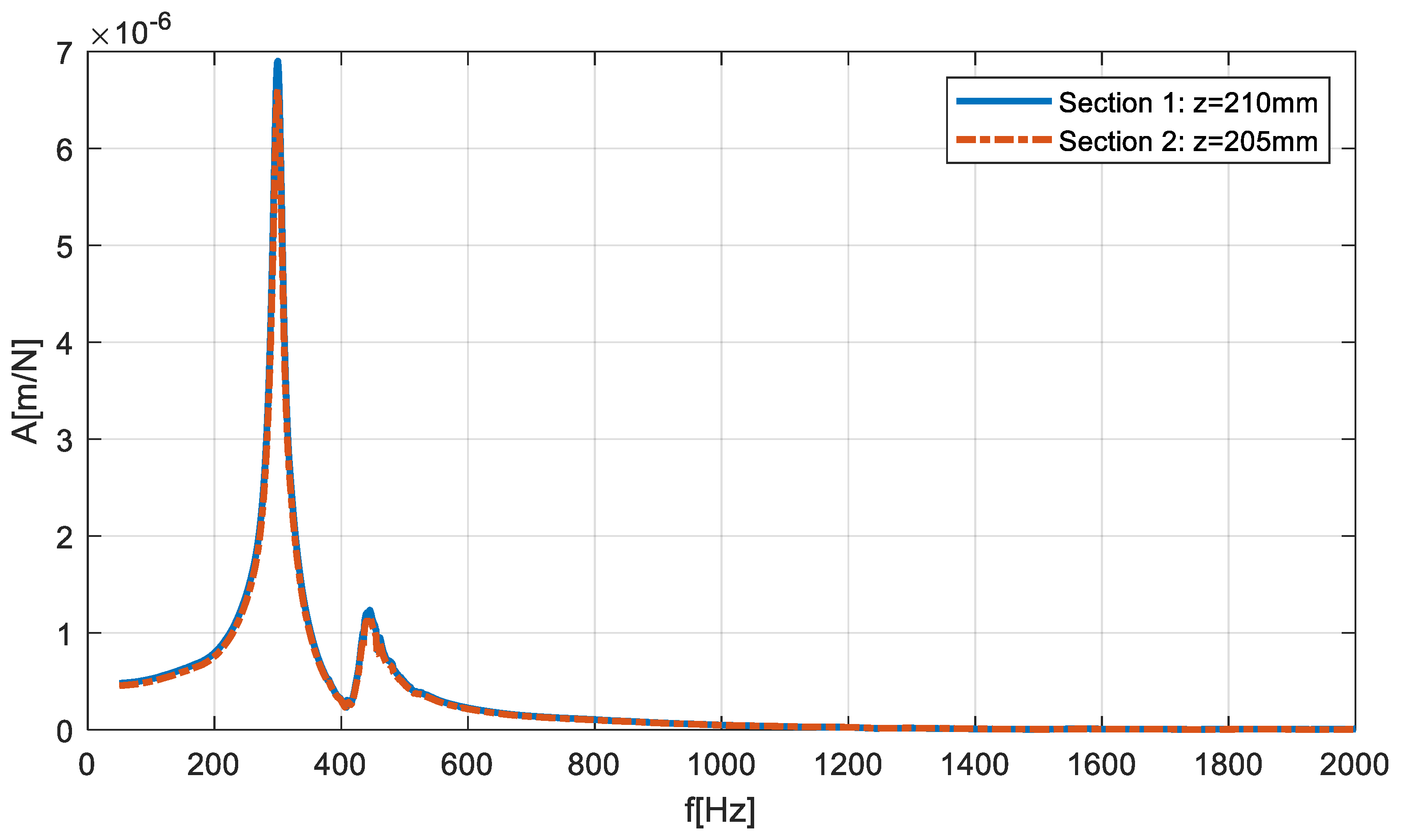
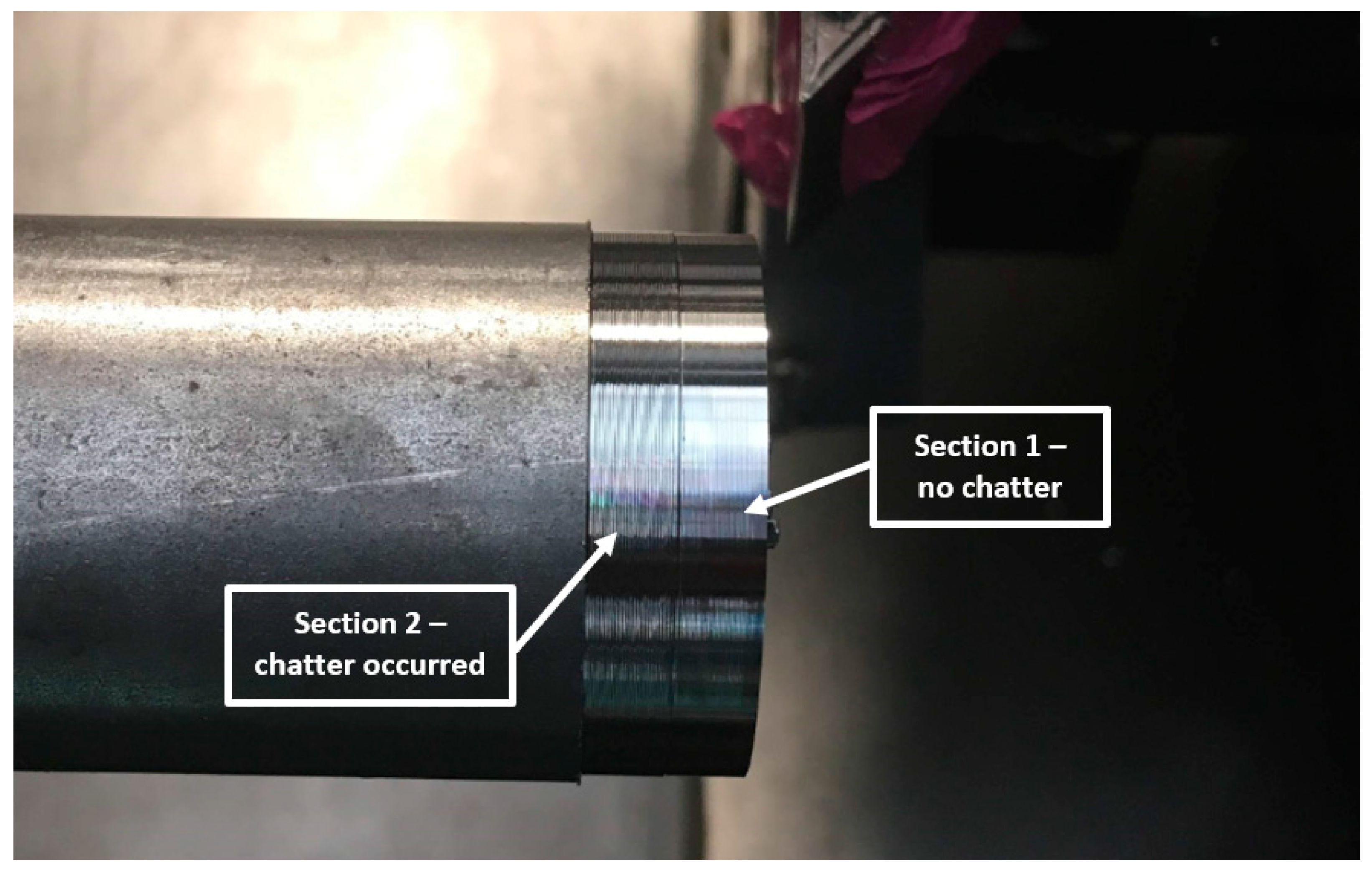
© 2019 by the authors. Licensee MDPI, Basel, Switzerland. This article is an open access article distributed under the terms and conditions of the Creative Commons Attribution (CC BY) license (http://creativecommons.org/licenses/by/4.0/).
Share and Cite
Jasiewicz, M.; Miądlicki, K. Implementation of an Algorithm to Prevent Chatter Vibration in a CNC System. Materials 2019, 12, 3193. https://doi.org/10.3390/ma12193193
Jasiewicz M, Miądlicki K. Implementation of an Algorithm to Prevent Chatter Vibration in a CNC System. Materials. 2019; 12(19):3193. https://doi.org/10.3390/ma12193193
Chicago/Turabian StyleJasiewicz, Marcin, and Karol Miądlicki. 2019. "Implementation of an Algorithm to Prevent Chatter Vibration in a CNC System" Materials 12, no. 19: 3193. https://doi.org/10.3390/ma12193193
APA StyleJasiewicz, M., & Miądlicki, K. (2019). Implementation of an Algorithm to Prevent Chatter Vibration in a CNC System. Materials, 12(19), 3193. https://doi.org/10.3390/ma12193193




